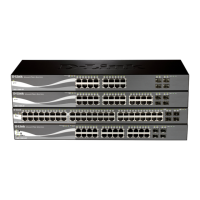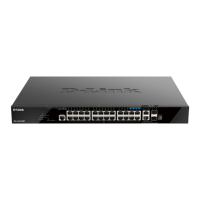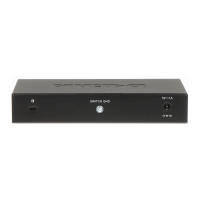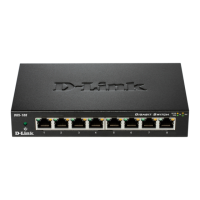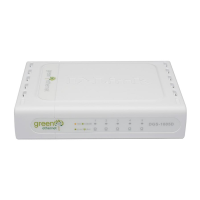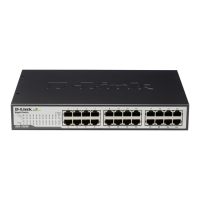DGS-1510 Series Gigabit Ethernet SmartPro Switch Web UI Reference Guide
1
1. Introduction
This manual’s command descriptions are based on the software release 1.10. The commands listed here
are the subset of commands that are supported by the DGS-1510 Series SmartPro switch.
Audience
This reference manual is intended for network administrators and other IT networking professionals
responsible for managing the switch by using the Web User Interface (Web UI). The Web UI is the
secondary management interface to the DGS-1510 Series switch, which will be generally be referred to
simply as “the Switch” within this manual. This manual is written in a way that assumes that you already
have the experience and knowledge of Ethernet and modern networking principles for Local Area
Networks.
Other Documentation
The documents below are a further source of information in regards to configuring and troubleshooting
the switch. All the documents are available either from the CD, bundled with this switch, or from the D-
Link website. Other documents related to this switch are:
• DGS-1510 Series Gigabit Ethernet SmartPro Switch Hardware Installation Guide
• DGS-1510 Series Gigabit Ethernet SmartPro Switch CLI Reference Guide
Conventions
Convention Description
Boldface Font
Indicates a button, a toolbar icon, menu, or menu item. For example:
Open the File menu and choose Cancel. Used for emphasis. May
also indicate system messages or prompts appearing on screen. For
example: You have mail. Bold font is also used to represent
filenames, program names and commands. For example: use the
copy command.
Initial capital letter Indicates a window name. Names of keys on the keyboard have initial
capitals. For example: Click Enter.
Menu Name > Menu Option Indicates the menu structure. Device > Port > Port Properties
means the Port Properties menu option under the Port menu option
that is located under the Device menu.
Blue Courier Font
This convention is used to represent an example of a screen console
display including example entries of CLI command input with the
corresponding output.
Notes, Notices, and Cautions
Below are examples of the three types of indicators used in this manual. When administering your switch
using the information in this document, you should pay special attention to these indicators. Each
example below provides an explanatory remark regarding each type of indicator.
NOTE: A note indicates important information that helps you make better use of your device.

